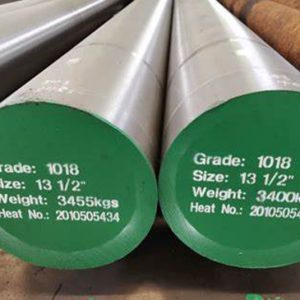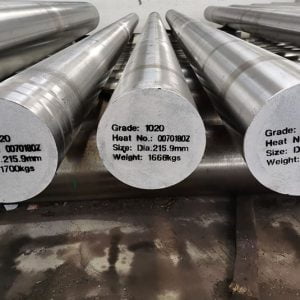Introduction

Steel 1045, known for its exceptional strength and durability, is a medium-carbon steel alloy widely utilized in industrial machinery. Its composition, primarily consisting of around 0.45% carbon and moderate amounts of other alloying elements, grants it robust mechanical properties suited for demanding applications across various sectors. This blog explores in depth the diverse applications of 1045 steel in industrial machinery, emphasizing its key characteristics, advantages, and specific uses.
Properties of Steel 1045
1045 steel is valued for its combination of high tensile strength, toughness, and good machinability. With a carbon content of approximately 0.45%, it strikes a balance between hardness and ductility, making it suitable for components subjected to heavy loads and frequent mechanical stress. The alloy’s properties include:
- Carbon Content: 0.45%
- Tensile Strength: High, providing excellent resistance to deformation under stress.
- Hardness: Medium to high, contributing to wear resistance and durability.
- Machinability: Excellent, facilitating precision machining and shaping.
- Weldability: Good, allowing for ease of joining through welding processes.
Applications in Industrial Machinery
Steel 1045’s versatile properties make it indispensable in various industrial machinery applications:
- Shafts and Rotors: In machinery such as engines and turbines, 1045 steel shafts effectively transmit torque and rotational motion due to their high tensile strength and fatigue resistance.
- Gears and Sprockets: The alloy’s hardness and wear resistance make it ideal for gears and sprockets in automotive and manufacturing machinery, where durability and precise tooth engagement are crucial.
- Hydraulic Cylinder Shafts: Steel 1045’s strength and toughness are well-suited for hydraulic systems, providing reliable performance in cylinder shafts subjected to high pressures and dynamic loads.
- Piston Rods: Used in hydraulic and pneumatic cylinders, 1045 steel piston rods withstand repetitive stress and maintain dimensional stability, ensuring smooth operation over extended periods.
- Tool Holders and Arbors: Machinists and toolmakers prefer 1045 steel for tool holders and arbors due to its machinability and ability to maintain cutting tool alignment and stability during machining operations.
Case Study: Steel 1045 in Manufacturing Equipment
A notable example of Steel 1045’s application is in stamping presses within manufacturing plants. These presses require robust shafts capable of withstanding high torsional forces and continuous operation. 1045 steel’s superior strength and machinability ensure the reliability and longevity of press components, minimizing downtime and maintenance costs.
Advantages of Steel 1045

Steel 1045 offers several advantages in industrial machinery applications:
- Cost-effectiveness: Compared to higher alloy steels, 1045 steel provides a cost-effective solution without compromising on performance.
- Machinability: Its excellent machinability allows for efficient production of complex parts and components, reducing manufacturing lead times and costs.
- Versatility: Suitable for a wide range of applications, 1045 steel adapts well to different manufacturing processes and environments, from heavy-duty industrial machinery to precision engineering applications.
Conclusion
In conclusion, Steel 1045 stands as a cornerstone material in industrial machinery, fulfilling critical roles in ensuring the performance and reliability of various components. Its robust mechanical properties, including high strength, hardness, and machinability, make it a preferred choice for shafts, gears, hydraulic components, and tooling across diverse industrial sectors. As technology advances, 1045 steel continues to prove its worth, driving efficiency and innovation in industrial machinery applications.
FAQ
Q: What are the welding considerations for Steel 1045?
A:Steel 1045 can be welded using conventional methods such as arc welding and gas welding. Preheating and post-weld heat treatment are recommended to minimize the risk of cracking and ensure weld integrity.
Q: Is 1045 steel suitable for high-temperature applications?
A:While 1045 steel exhibits good strength and toughness, it is generally not recommended for sustained high-temperature applications exceeding 400°C due to potential loss of mechanical properties.
Q: How does Steel 1045 compare to other steels like 4140?
A:Steel 1045 and 4140 differ primarily in carbon content and alloy composition. 4140 has higher alloy content, offering superior hardness and strength, while Steel 1045 excels in machinability and cost-effectiveness for many industrial applications.






